The Romans were great winegrowers. At the time of their agricultural acme, they had reached good empirical knowledge of the vineyard practices (with the due limits). Later, it will take centuries to recover these skills. Among these knowledge, the truly disruptive element of Roman viticulture, which will mark the Italian (and European in general) vine-wine culture up to the present day, was the understanding of the inseparable link between wine and territory.
Roman viticulture knowledges were built in centuries, from a primitive viticulture of the origins to what is considered the apex, the second part of the first century BC. In this period Columella lived, who is considered the first agronomist in history. His work “De Re Rustica” is so precise and detailed that it is considered the first real agricultural treatise ever. The agrarian authors after him will essentially resume its contents and not for a short time: Columella will remain as the main reference for agriculture at least until the end of the eighteenth century.
[one_third][info_box title=”The choice of soil, climate and varieties according to the ancient Romans” image=”” animate=””]Let’s see what the agrarian Latin authors wrote about wine and territory, especially Columella.
Columella writes numerous reflections on the choice of the place of the vineyard, in relation to the soil and climate, and the consequent choice of the most suitable varieties. Not all of his considerations are correct, in light of our knowledge, although many are so (albeit generic). What is relevant is that the Romans understood the importance of these relationships more than two thousand years ago.
Columella writes that the best soil should not be too clayey and not too light (today we would say medium-textured), but get closer to the latter. It must not be too poor and not too fertile, but better similar to the second. The steep terrain is not the better, not even the extreme plain. The better is a more or less inclined plane (to drain the water). It is necessary to investigate the type of land, even underground, and not only look at the surface. The best choice, however, is to experiment with the different types of soil, to understand the different production responses.
In general, however, if the soil is suitable for giving pleasant and precious wine, it is better to plant varieties that are not too productive, but not too little either. If, on the other hand, the soil is not so good, it is better to plant a very fertile variety, to have a good yield in quantity.
Nel piano si ha vino più in abbondanza, nelle colline quello più gradevole. Le vigne inclinate verso il nord sono più fertili, ma quelle verso il sud danno il vino dal gusto migliore. Nei luoghi freddi è meglio avere l’esposizione a sud, in quelli tiepidi è meglio l’est, purché in entrambi i casi non siano esposti a venti provenienti da quelle direzioni.
We know the names of many Roman varieties, in fact they have been listed in several ancient texts. It is really impossible to connect them to modern ones. The names changed even at that times. Varieties that are listed by Cato are no longer named by Columella and Pliny, who write 200 years later. Even these two authors, who are contemporary, sometimes list different names. Anyway, I don’t write the varieties, also because they can be found everywhere. It seems to me more interesting the part where Columella explains the choice of vines in relation to the territories.
He writes that, when you have to make a vineyard, you must be personally informed about the best vines to plant and do not entrust the purchase of the cuttings (viviradicem) to others. Better still is the internal nursery (vitiarium). It must not be placed in a soil of worse quality than that of the vineyard.
The farmer must understand that the varieties of vines that resist fog are suitable for the plains, instead those that tolerate drought and winds are more suitable for the hill. So, in the fertile soil, the not very vigorous vine will be planted, in the poor soil the most vigorous vine, in the dense soil the strong vine that produces many canes. The vines that produce large and soft berries are not suitable in moist soil. Those with small and hard grapes are better. Different varieties can grow in well-drained soil.
The winegrower, however, must not only to pay attention to the soil but also to the climate. Where there is colder and fog, the early vines are better, the fruits of which ripen earlier or those that have robust and hard grapes. Where there is a lot of wind and storm, robust vines with hard berries will also be planted here. Where it is very hot, the most tender varieties and that have the most compact bunches are the best. In the most placid and serene places, you can put all sorts of vines, but the early season ones are the better.
The wise winemaker in addition to the best vines, should always plant different varieties, because each can respond differently to the adversities of each vintage.
From Columella description, we can also understand that the common practice at the time was the field-blend vineyard, i.e. with multiple varieties mixed together, as remained in Italy (and other European territories) for centuries to come. According to Columella, however, it is better to arrange the varieties separately. He lists the advantages of this choice. Not all of them bloom and mature at the same time. It is not easy to collect together grapes with different maturity: if you wait for the later grapes, the first ones are eaten by birds and damaged by winds and rains. The separation also allows the vintner to know how to prune each of them, because at that time there isn’t the leaves to make the typology understand. In addition, the winegrowers can choose to plant each species in the part of the vineyard best suited to its characteristics, for the soil or with the right exposure. However, Columella admits that it is often difficult to implement this principle, also because most of the winegrowers cannot distinguish the different varieties. However, if not possible otherwise, Columella writes that at the least it is better to plant together those varieties that have similar taste and similar maturity. We can find identical considerations to Columella’s ones in numerous texts of the agronomists of the nineteenth century. As Columella, also they tried to ferry the viticulture of their times towards more rational forms!
The vineyard with more varieties is called by Plinius vitis conseminea, conseminales vinea by Columella.
[/info_box][/one_third]
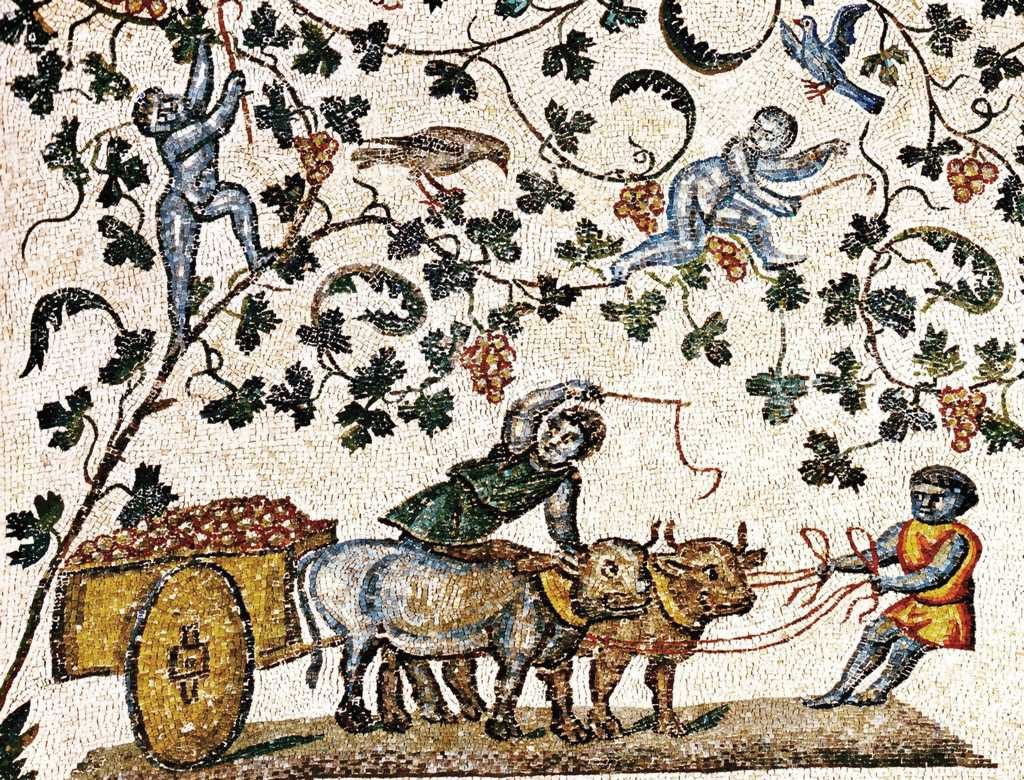
In his and in other Latin texts, it is underlined and examined how each soil and climate require the choice of the most suitable grape varieties, the different choices of work approach and the production of different types of wine. This, linked to the fact that the Romans first identified wine with the place of origin and the year of production, makes us understand that they were the first to conceive that fundamental concept that we commonly call today “terroir”.
The Romans had not given a name for this concept, just as it will not be done long in Italy and in the rest of Europe. Yet, it has been a tradition for millennia.
This concept was examined in depth in more recent times, within that long process of transformation of the twentieth century wine sector, that is the basis of the birth of modern wine. In particular, this argument was mostly discussed after the Second World War.
In this period many scholars and experts began to reflect deeply on the concept of wine and territory, as a basic element of wine European culture.
Its definition is not simple, as it is made up of many factors. The first, the most obvious one, is certainly the territorial one in the strict sense, linked to the geographical characteristic, therefore soil and climate. In relation to these pedo-climatic differences, there are also the different answers that each grape variety can give in a different territory or micro-territory. Furthermore, the annual variations of these elements, linked to the vintage, must be considered. However, not only the “natural” elements intervene. A territory is also linked to the local traditions, their transformations over time, the transformation of the landscape by the man, the history, the local wine culture, the production choices, etc.
The scholars understood necessary to find a name to express this so complex concept. The word “territory” is limiting, too common, and therefore possible cause of misunderstanding. The easiest mistake, which many persons still make today, is to reduce it to the pedo-climatic characteristics only. Thus, two terms were born: Genius Loci and terroir.
They are different? No, they express more or less the same concept, but they are born in two different cultural spheres.
The Genius Loci
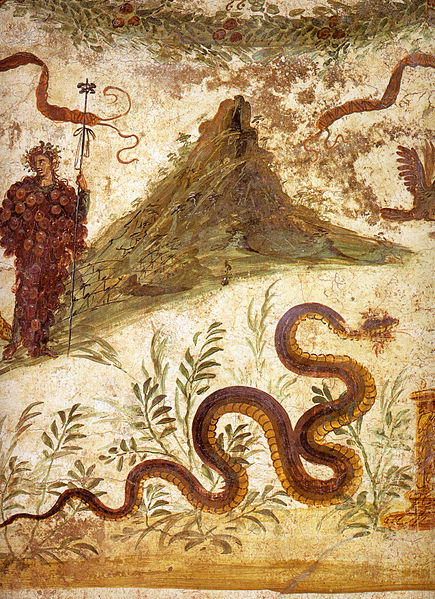
In modern times, the Latin locution Genius Loci was first introduced in architecture, inserted in the historical reflection on the concept of place. From here it was transferred to the concept of wine territory.
What does mean Genius Loci?
In ancient Roman times, the Genius (from the verb gignere = to create, to generate), was a tutelary spirit, a benevolent god who watched over every person. More or less, the same concept was present in Greek culture, where it was called daimon. It was not only proper of the individual, but also of the community: there were also a Genius of the family, of the Province, of the State, of various associations, etc. The concept was also extended to places, with the name Genius Loci, the genius of the place (locus). It was a benevolent caretaker who watches over it and the people who lived there or even a sort of personification of the place. According to Servius:
“nullus locus sine Genio est” (no place is without a genius).
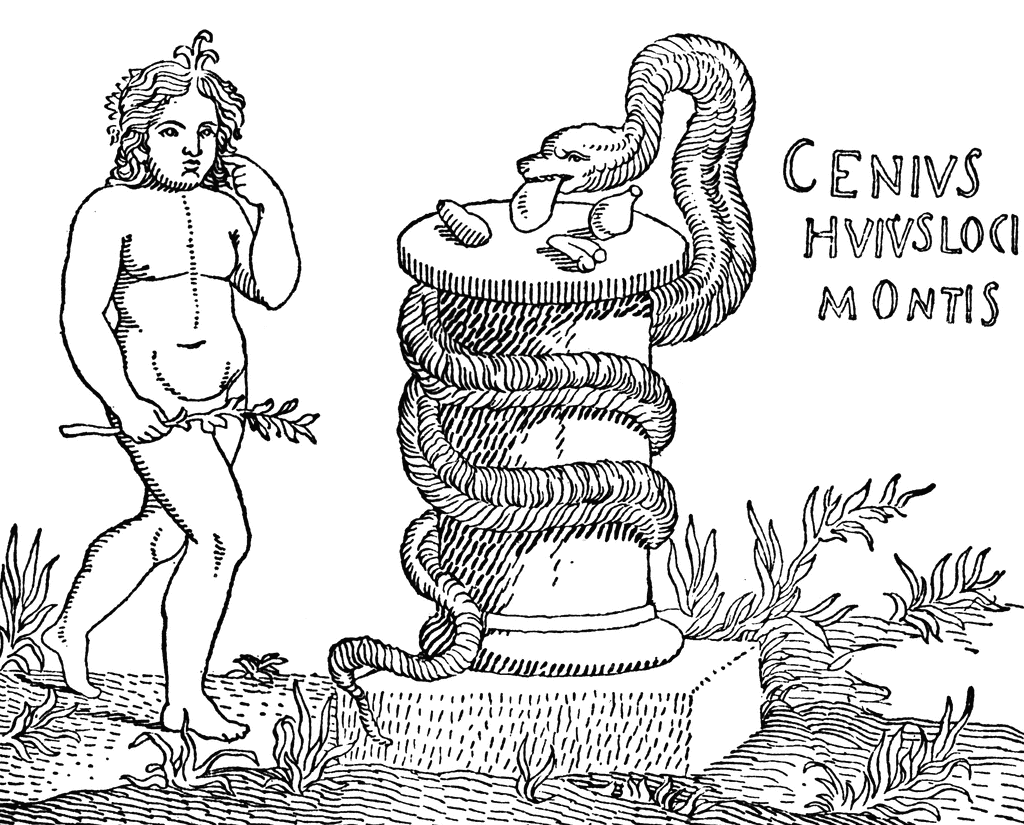
Virgil, in the Aeneid, describes it (him or her, the Genius may be masculine or feminine) as a big and slimy snake that crawls out of the depths of the earth (book V, 84-75). It was often depicted as a snake, an animal considered a symbol of luck. Its image on the walls of a building was the expression of the desire to put it under the protection of the Genius Loci. Often it is depicted as a snake wrapping himself around an altar, where it goes up to devour the offerings that people have been made to him.
To have its benevolence, it is necessary to respect its place, to invoke its protection and to offer it perfumes, flowers, fruits, focaccias and wine. Then, the Genius would have been benevolent, it would have revealed himself/herself filling the place with sacredness and lucky. On the other hand, if the person had been hostile to the place, devastating it or exhausting its resources, then the genius would have been antagonized. It would have denied itself, it would have emptied the place of its presence, thus causing misfortune.
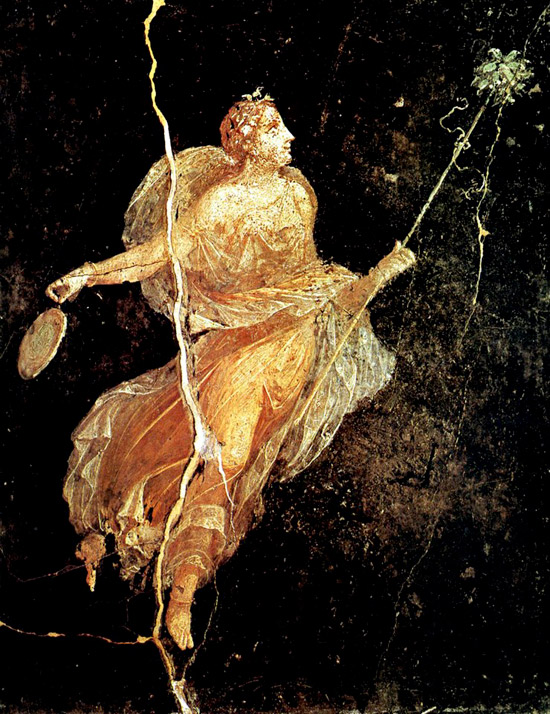
Sometimes, the Genius is represented as a human figure, surrounded by symbols of plants and animals typical of the place. The more common picture of the Genius was a winged person, from which the depictions of the Christian angels are derived.
These beliefs will however be assimilated into Christianity in the figures of the Guardian Angels and Patron Saints.
The architects Aldo Rossi, in the late 1960s and, above all, the Norwegian Christian Norberg-Schulz, a decade later, were the first to introduce the figure of the Genius Loci in the modern debate on the meaning of “place”. The Latin locution Genius Loci thus began to be used to define the complex multiplicity of those elements that constitute the deepest identity of a place. They include all its intrinsic characteristics, made up of geographical and structural, natural and artificial elements, but also by immaterial and changeable elements, such as historical and cultural stratifications, the very way in which the observer perceives it, its character, the colors, the variations of the light, etc.
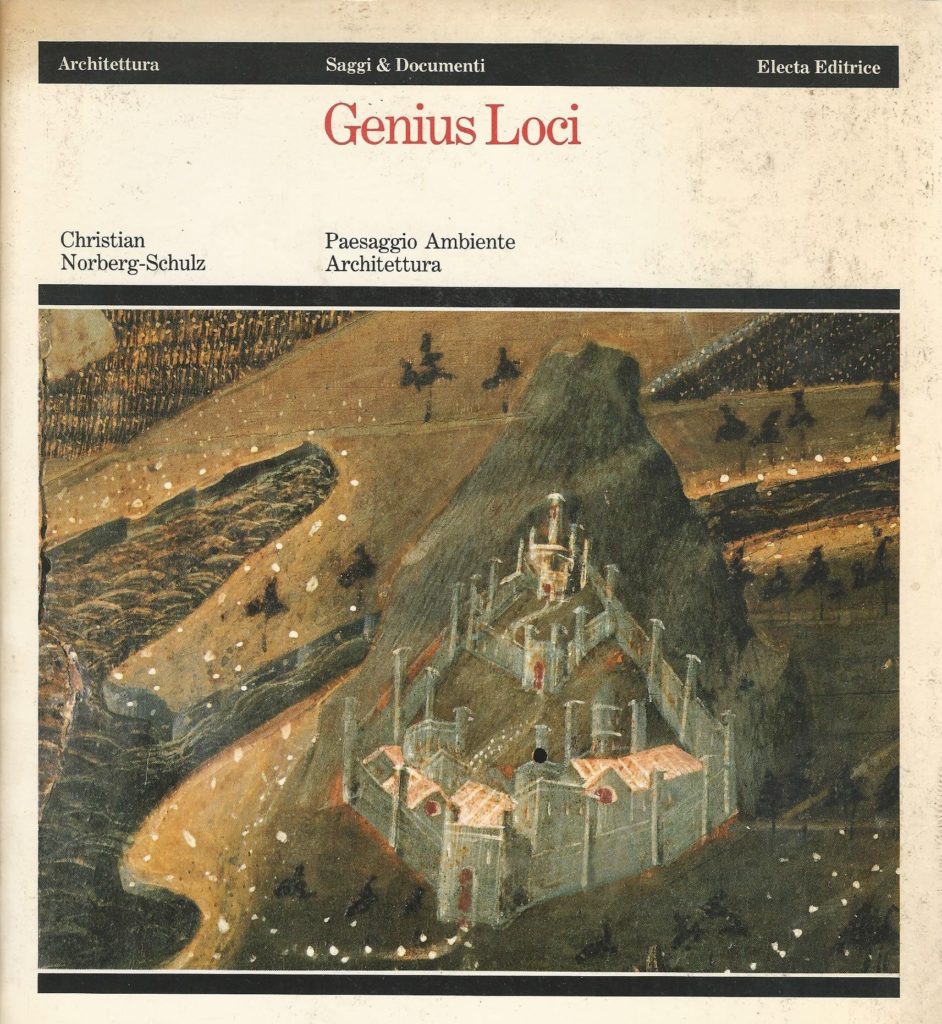
Few years later, prof. Attilio Scienza, taking inspiration from the architectural debate, proposed the use of the figure Genius Loci in the wine sector, to powerfully recall that link between wine, territory and culture, inherited from the Romans.
The birth of the “terroir”
At about the same time, this reflection was also maturing in France, starting from the same cultural background: all European wine territories are heirs of Roman viticulture.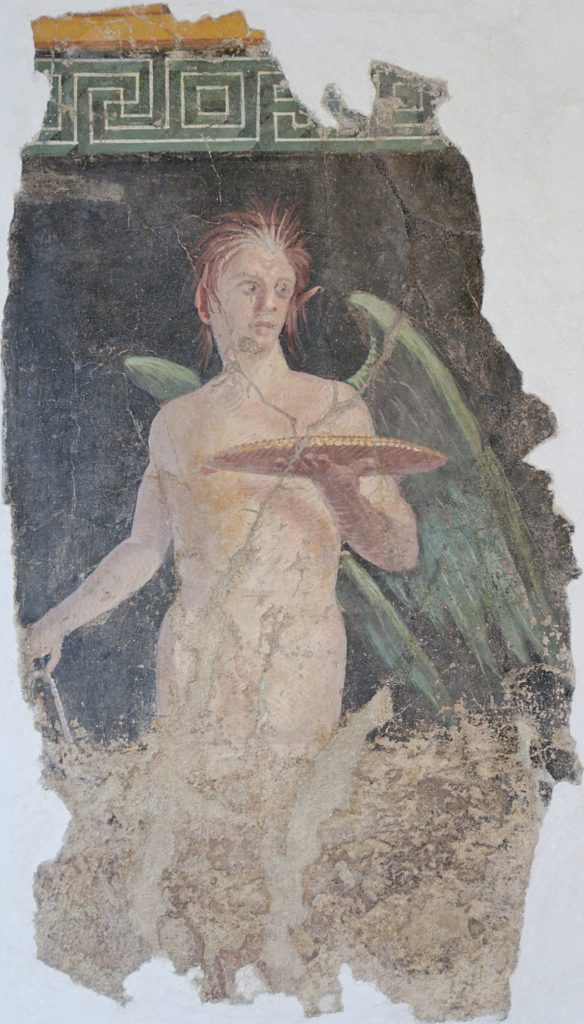
The French scholars made this concept explicit with the term terroir, which began to be used with this meaning more or less from the mid-1900s. Until then, this word was an archaic synonym of soil or territory, not commonly used in modern French. It was an archaism used mostly in agriculture. Oddly, in the XVIII-XIX century the word “terroir” has been derogatory. The “goût de terroir” (terroir aroma) indicated a negative aroma of the wine. “On dit que le vin a un goût de terroir, quand il a quelque qualité désagréable qui vient par la nature de la terre où la vigne est plantée“. “It is said that the wine has the taste of the terroir when it has some unpleasant quality that comes from the type of land where the vine was planted”. (Louis Liger, “Dictionnaire pratique du bon ménager de campagne et de ville”. Ribou, Paris, 2 t., 449 & 407 p.).
In the 70s-80s, prof. Attilio Scienza committed himself to spreading the concept of viticultural territory as Genius Loci, with a view to highlighting its productive and cultural importance, but also to underline our “birthright”, as Italians, of a cultural heritage born in Italy, using a Latin name.
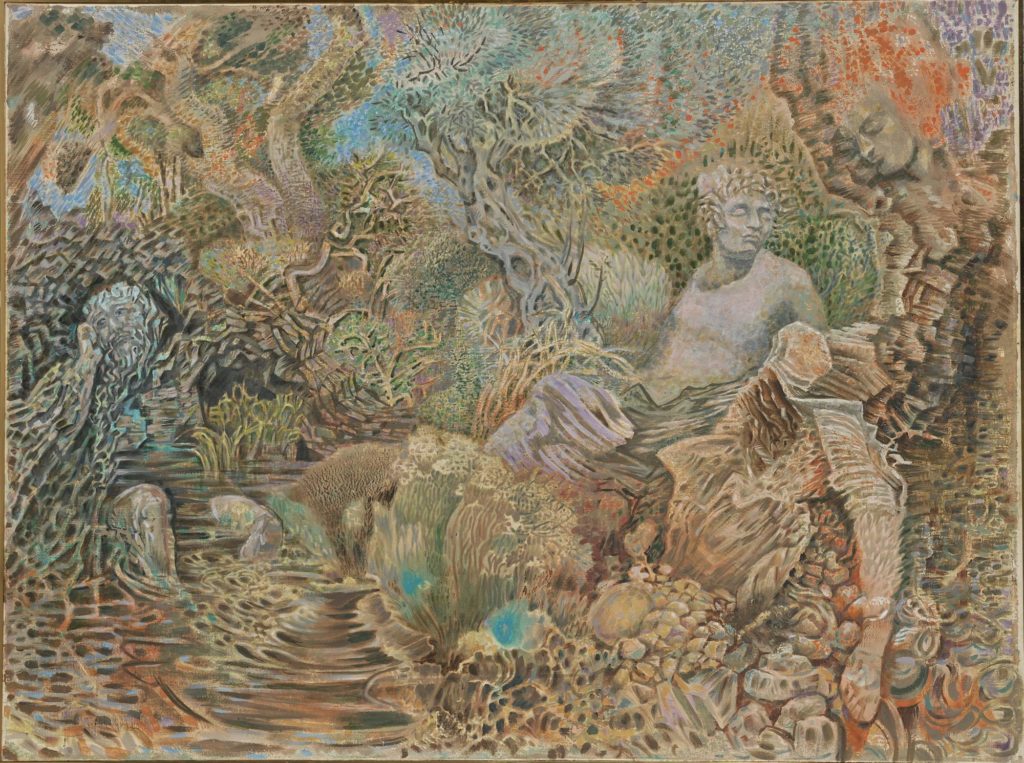
Unfortunately, the world of Italian wine did not understand the centrality of this aspect, as well as the great communication on Italian wine in the world that would have derived from it. Later, when Italian wine-producers began to understand the importance of narrating their traditional relationship between wine and territory, they had to accept the use of the French word “terroir”, which in the meantime had emerged in the world. In fact, our neighbors (unlike us) had understood the importance of this concept first. Then, the word “terroir” was amplified and consolidated universally by Anglo-Saxon wine writers. Today, sometimes, the French claim to have also invented it! Sic transit gloria mundi (as Latins said)
I can’t hide being biased. My Latin soul makes me love the term Genius Loci more, also because it seems to me that it explores greater depths! It is so fascinating the image of a genius who gives us favors or misfortune as much as we love and respect our land!
However, beyond primogeniture and words, the fact remains that nothing like the concept of Genius Loci (or terroir) is able to represent the truest soul of artisan wine, from over two thousand years. There are people who say it is something impalpable, difficult to explain in detail or to understand rationally while tasting a wine. On the other hand, it is its nature: in part it is explained by science, but it also has something elusive, complex, easier to understand only with the intuitive side of the mind. Anyway, when I’m doing my work of winemaker, however, I always realize that nothing is more real and alive in our wines than it.
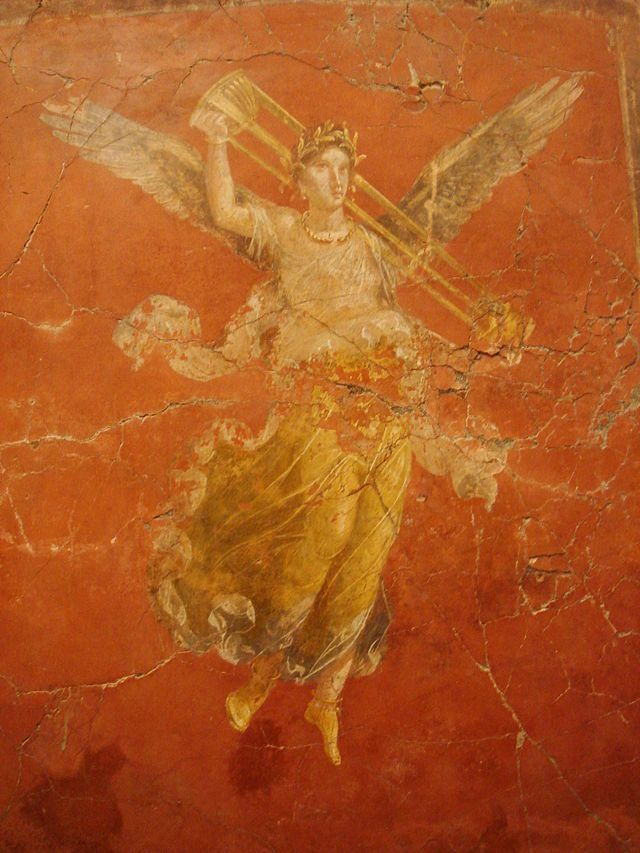
The images without caption are mosaics and frescoes from the Roman era.
Bibliography:
Columella, “De re rustica” , 65 d.C.
Giangirolamo Pagani, 1794, Rustici Latini Volgarizzati, Lucio Giunio Moderato Columella, ed. Vittorio Curti Venezia.
Attilio Scienza et al., 2010, Atti del Convegno “Origini della viticoltura”.
Luigi Manzi, 1883, “La viticoltura e l’enologia presso i Romani”.
Dalmasso e Marescalchi, 1931-1933-1937, “Storia della vite e del vino in Italia”.
Emilio Sereni, 1961, “Storia del paesaggio agrario italiano”,
Marcella Peticca, “Genius Loci: perdita e riscoperta del luogo”, 2015, Università di Bologna.
P. Prévost, P. Morlon, J. Salette, “Le Mots de l’Agronomie“, 2017, https://mots-agronomie.inra.fr/index.php/Terroir
https://www.romanoimpero.com